|
|
|

|
|
|
:: Arthritis & Rheumatism
:: Back Problems
:: Balance Improvement ::
:: High Blood Pressure :: Post-Operative Recovery :: Post-Traumatic Stress :: :: Stress Reduction :: Athletic Performance :: Issues of Aging :: :: Weight Management :: |
|
![]() §
denotes Glossary entry
§
denotes Glossary entry
| Arthritis & Rheumatism | |
|
In Traditional Chinese Medicine, § there is a foundational life philosophy called the Five Elements. § This is a model of the cosmos in respect to five component factors; fire, earth, metal, water, and wood. Each of these elements contribute an essential ingredient to one's complete health experience. The wood element is that which governs the joints.If one were to imagine a blade of grass, or a bamboo shoot, one would have the perfect example of the wood quality; supple strength. In T'ai Chi as an internal art, it is recognized that this quality of suppleness can not come from muscle strength. Muscles must supply good tone, but the quality that we look for in T'ai Chi is much more joint oriented. The ancient Taoist sage Lao Tzu taught that, "It is the stiff old tree that snaps in the strong wind, while the blade of grass bends and lives to see another day". So the practice of T'ai Chi has been developed with this in mind. The result of doing T'ai Chi is that all the joints of the body benefit. In Chinese medicine, conditions like arthritis and rheumatism are considered the result of stagnation (toxicity), or poor circulation. So T'ai Chi practice supports the improvement of circulation due to a strengthening and expanding of range of movement of the joints, especially those of the ankles and hips. If a joint condition such as arthritis is at an advanced stage, T'ai Chi might offer some relief and improvement. If the situation is at an earlier stage, practice can be enormously beneficial as a preventative and curative therapy. |
|
| ^Top | Back Problems |
|
Many, if not most, back problems originate in poor movement patterns. The tendency to bend, lean, and twist the trunk places great stress on the muscle groups and vertebrae located in the lower back. These muscles are not designed for strength. The muscles of the lower back (lumbar-sacral area) are intended to supply support for the lower back area, not to be work oriented or weight bearing.When we use our body in ways that distort the trunk position, as previously mentioned, work that should be performed by the large muscle groups in the legs is transferred up to the lower back. This sense of poorly defined muscle use is a prime contributor to back problems.
With students who have back problems I strongly emphasize breaking the poor movement habit of twisting, which is the separating of the head and shoulders off of the base of the hips, resulting in a shortening and tightening of the lower back muscles. Not only does this instill tremendous tension in these muscles but also causes compression in the discs and vertebra in the area as well. The intention of T'ai Chi is to learn to move the trunk as a whole (T'ai Chi Trunk § ) from the Tan T'ian § or pelvis, without twisting, therefore eliminating much of the cause of lower back stress and discomfort. This, along with the willingness to allow the legs to bear more of the weight of the body, can be truly miraculous in terms of alleviating much of the cause of lower back discomfort. |
|
| ^Top | Balance Improvement |
|
As is the case for most T'ai Chi principles, § the physical skill or quality is symbolic for a life experience that the practice intends to extend to include every aspect of our lives. The idea of being well balanced physically is simply a foundation for a similar ability to maintain a good sense of balance which includes the emotions and the mind. |
|
| ^Top | High Blood Pressure |
|
For people with heart conditions, such as high blood pressure, the contemporary Western therapeutic approach consists of exercise, medication, and diet. As the exercise aspect of this program T'ai Chi offers a number of special benefits. Because of its gentle approach to movement, T'ai Chi allows even a person recuperating from a serious illness or operation the opportunity to begin moving the body. In T'ai Chi this quality of movement, which includes shifting the weight, trunk rotation, and taking steps, is used to enhance circulation throughout the body, including the circulation of the blood through the veins, arteries, etc. In Traditional Chinese Medicine § one's health is evaluated in terms of quality and amount of circulation. The better one's circulation, the better one's health. T'ai Chi, as therapeutic movement, is designed to be a non-stressful use of physical movements in order to facilitate organ health (heart, lungs, liver, spleen, and kidneys), rather than an emphasis on muscle strength. This is the intention of T'ai Chi as an "internal" healing art. |
|
| ^Top | Post-Operative Recovery |
|
In many ways T'ai Chi is perfectly suited for such a situation. It's emphasis on gentleness and relaxation implies an approach that allows the student/patient to practice comfortably.This permits even a person recovery from major surgery to participate with a sense of success. The therapeutic affects of T'ai Chi have always placed great emphasis on a movement experience that strengthens the immune system by increasing circulation throughout the body. This too is well suited for the post-op patient. Lastly, on the emotional and mental level, a major and understandable concern of many patients has to do with a question of being able to function after surgery. What are the long term affects of such an experience? The practice of T'ai Chi, if presented in a skillful and appropriate manner, can greatly alleviate many of these concerns by offering a direct body experience that permits the patient, almost on a daily basis, to experience improvement; improvement in mobility, improvement in balance, improvement in strength and confidence. All these can be great emotional/mental contributors to the overall process of recovery after surgery. |
|
| ^Top | Post-Traumatic Stress |
|
Let me state at this point that I make no claims to be a psychiatrist or a psychologist, or to have any extensive training in a Western approach to conditions which we might consider mental disorders. It was the idea, as mentioned, of the medical professionals in the Veterans Center to apply a practice like T'ai Chi as an alternative approach to the difficulties experienced by individuals dealing with this type of condition. In our day and age it is possible to experience intense and lasting stress in any number of different ways. Any traumatic abuse, be it physical, emotional, or mental, will result in an internal injury which can have lasting debilitating effects. In working with the afore mentioned group, I have made a few observations which I hope may be helpful. The first is that it a natural response to intense trauma for the individual to want to escape the experience, either during or after or both.. Most individuals are not trained nor prepared to handle the discomfort, fear, and overall intensity the experience presents to them. Even a soldier, who goes through extensive training and seeks to develop a particular mind-set, is probably unprepared for the reality of war. How much more unprepared is a woman who is raped, or an abused child? So there is a natural and probably necessary mental/emotional strategy to escape from the pain and horror. But unfortunately, if continued over a long period, the result of this escape mechanism is that there is a growing sense of alienation and separation from reality. Reality is a pretty heavy term, and can be a bit ambiguous. In using it what I mean is the ability for any individual to pay attention and function reasonably well (clearly) in respect to present moment circumstances. Because the trauma is experienced, either directly or indirectly, through the physical experience, much of the sense of alienation seems to express itself in the lessening of awareness and connection between the mental/emotional levels and the physical body. What I have experienced and observed in my work at the Veterans Center is that, in a number of ways, T'ai Chi presents a valuable and result oriented approach to help satisfy the needs of people dealing with this condition. First, and maybe most important, T'ai Chi places great emphasis in the mind/body relationship. A student, regardless of past experience, is supported in returning to a greater awareness of their body. This is emphasized as the basis for good physical health, but in reality, its primary importance is that of mental health. The condition of the mind disconnected from the body, and therefore from present moment experience, is viewed as the primary cause for all confusion, delusion, and mental/emotional pain. The need to reconnect mind to body is a step of the healing process that includes not only those who have experienced extreme traumatic stress, but just about everyone in some manner. In varying degrees, we all suffer from post traumatic stress syndrome. For a beginner through intermediate level student, T'ai Chi emphasizes a few basic principles. These are to strengthen one's ability to pay attention, to connect that attention to the body experience, and then to relax. All of this is looked at as being very "grounding". In Traditional Chinese Medicine there is a tremendous emphasis placed on the experience and relationship one has to the earth. The earth qualities, the earth energy, is what keeps us physically healthy, emotionally confident, and mentally strong. People who suffer from post traumatic stress syndrome, from a traditional Chinese diagnostic view, would be considered to be deficient in "earth Chi". They lack the qualities of stability, balance, and confidence. So the intent of the practice is to facilitate the individual's ability to reestablish that earth connection, not only to the physical ground, but gradually, to that reality base of what's happening now, both internally and externally. During the process of establishing that sense of reconnection, one is required to look at and resolve or heal any obstruction that stands in the way. No small task, but T'ai Chi would ask "What is the alternative?" A final idea concerning the place a practice like T'ai chi might have in a clinical setting where other modalities, like psychiatry, might be the dominant approach. The doctor that invited me to conduct this class was wise in his insight that different individuals respond to different methods. The value of T'ai Chi is that it addresses the effects of past trauma in a non-intellectual approach; things are not talked about, one doesn't have to express oneself verbally. Some people do not do well with words (intellect). Yet, in T'ai Chi, issues are dealt with very effectively, over time, because the practice requires that the student apply great amounts of attention towards themselves, initially to the body, but eventually to every level. A student explores their feelings, qualities of experience, and levels of comfort, or lack of. For some people, and I would include myself in this category, this body oriented way of dealing with emotional/mental stress can be a most effective tool. |
|
| ^Top | Stress Reduction |
|
T'ai Chi, like contemporary Western psychiatry, understands that it is very difficult to directly influence the mental/emotional state. So what has developed over the centuries is a very simple yet highly sophisticated method of influencing mental/emotional changes through body experiences. T'ai Chi , as a branch of Traditional Chinese Medicine, § looks at the mind, emotions, and body as interconnected. Their relationship is one of constant exchange of information and influence, and so, in a very real sense, mind, emotions, and body are one and the same. Therefore if we create a positive change in one, all then receive the information of that change, and then are changed themselves. So in T'ai Chi we use a process of relaxing muscular tensions, improving posture, and a deepening of the breathing process to affect in a positive way the stress levels of the mind and emotions.
|
|
| ^Top | Athletic Performance |
|
I frequently get both amateur and professional athletes in my T'ai Chi classes. Golfers, tennis players, skiers, runners, surfers (I do live in Hawaii), and others who all marvel at how T'ai Chi practice improves their particular sport.
In world class sports, trainers often video an athlete in their activity, and watch in slow motion in order to diagnose deviations in good form or body mechanics. This is exactly what we attempt to do in T'ai Chi. Most of our practice is done slowly, not because it is felt that one should always move at that speed, but rather to take advantage of the learning opportunity that this provides. By doing T'ai Chi an athlete refines those movement qualities that are essential in order to bring the body up to peak performance capabilities. These capabilities, developed by moving slowly, actually include a sense of both strength and speed. The intention is to use our exercises to develop a heightened sense of body awareness so that we can begin to detect our poor movement habits and replace them with more skillful ones. This requires a strengthening of one's concentration, the ability to slow down, and the willingness to change old habits. The result of these three steps is that of a greatly improved athlete. |
|
| ^Top | Issues of Aging |
|
To begin with, T'ai Chi is a study that places great emphasis on balance, both physical and mental. It is very common for people, as they get older, to begin to lose their sense of balance and therefore become much more susceptible to falls and subsequent injuries. It has been documented that the fear of falling is one of the greatest concerns of Senior Citizens. In T'ai Chi practice, the principles of balance, which include joint involvement (ankle, knee, and hip), lower body awareness, and posture as it is involved in all body movements are explored and improved. This leads to a better sense of body movement and a growing confidence that permits a person of any age to live a fuller and more productive life.
|
|
| ^Top | Weight Management |
|
There certainly are a number of major contributors to a successful approach in managing one's weight; diet, exercise, self-esteem, metabolic rate, and toxicity are all important elements of the overall program. T'ai Chi , with its gentle yet effective approach, works on all of them. Initially, when one practices T'ai Chi , the common observation is that one's physical balance isn't very good. Recognizing this state of imbalance, using the slow, smooth exercises, one begins the work of improving their physical balance. The beauty of the art is that at the very same time the student is sending this same message of balance throughout all aspects of their body/emotions/mind. In T'ai Chi there is an understanding and respect for each individual as a unique expression of life's creative process. The operational word here is "unique". Unfortunately in our culture, because of the media, we are imprinted with very narrow ideas of beauty, desirability, and sense of worth. In Traditional Chinese Medicine § there is this basic tenet called the Five Elements; § those of fire, water, metal, and wood. Each of these different elements represents a completely different body type, from tall and thin, to short and broad. None of the types are considered more beautiful, more desirable, nor healthier. The intention of the practice is to engage in the process of learning who and what you are, and then going about improving what that is to the best of your ability. This is never to be confused with the frustrating attempt to try to be someone else, or something that you're not. |
|
| Home :: Site Map :: Contact | |
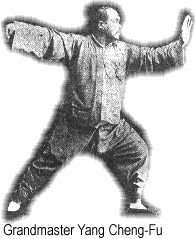 Back problems are a good example of the idea in T'ai Chi of the importance of "doing simple things well", or in this case, the results of doing a simple thing poorly over the course of time. Even though some people have the experience of traumatically "throwing their back out", which seems to denote a one time experience, this situation actually is an example of the cumulative effect of many, many poorly done movements. When we understand our daily actions (such as shifting weight, turning the trunk, and stepping) as being movements that are repeated hundreds of times a day, we begin to see the importance of doing these simple things well.
Back problems are a good example of the idea in T'ai Chi of the importance of "doing simple things well", or in this case, the results of doing a simple thing poorly over the course of time. Even though some people have the experience of traumatically "throwing their back out", which seems to denote a one time experience, this situation actually is an example of the cumulative effect of many, many poorly done movements. When we understand our daily actions (such as shifting weight, turning the trunk, and stepping) as being movements that are repeated hundreds of times a day, we begin to see the importance of doing these simple things well.
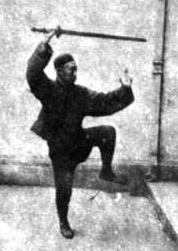 In T'ai Chi we imagine a perfect plumb line descending from the heavens, entering into the crown of the head, continuing down through the trunk, exiting the pelvic floor and going into the earth. This is our guideline for the upper body's contribution towards good balance. Next we need to position this erect upper body unit (
In T'ai Chi we imagine a perfect plumb line descending from the heavens, entering into the crown of the head, continuing down through the trunk, exiting the pelvic floor and going into the earth. This is our guideline for the upper body's contribution towards good balance. Next we need to position this erect upper body unit (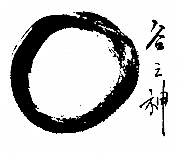 T'ai Chi also places emphasis on the development of certain life-style principles of which none is more important than that of balance. It is understood that in a very real sense all tension and stress are expressions of imbalance. Therefore the cultivation of improved balance, once again as a mind/body experience, can only have the affect of reducing stress.
T'ai Chi also places emphasis on the development of certain life-style principles of which none is more important than that of balance. It is understood that in a very real sense all tension and stress are expressions of imbalance. Therefore the cultivation of improved balance, once again as a mind/body experience, can only have the affect of reducing stress.
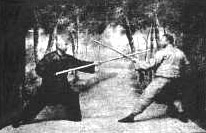 From T'ai Chi perspective, all movement, be it a golf swing or a skier gliding down a mountain slope, is an expression of body
From T'ai Chi perspective, all movement, be it a golf swing or a skier gliding down a mountain slope, is an expression of body 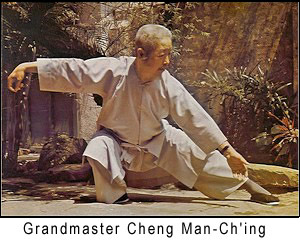 Another major benefit of T'ai Chi as it relates to seniors is its emphasis on gentleness and relaxation. Truly any individual can begin T'ai Chi because the best place to start your study is right where you are. In fact one of the most valuable aspects of the practice is to better define who you are in this very moment so that, knowing that, you can then chart your course of improvement and growth. I feel that a minimum entry level ability would be that of being able to walk, although a variation of practice can be adapted even for that individual who is unable to presently accomplish this. Lastly, I feel that a major value for the senior (or for that matter any adult) is the challenge of getting involved in a new study, accepting the fact that one is a beginner, and refining one's ability to learn. In my classes with seniors I de-emphasize the importance of evaluating their practice on a physical basis. This is not to imply that the physical aspect is not important, but rather to place the emphasis where it should be, which is on the challenge of learning. Over time, with practice, one begins to see that any life experience, including health and happiness, can be a learned experience.
Another major benefit of T'ai Chi as it relates to seniors is its emphasis on gentleness and relaxation. Truly any individual can begin T'ai Chi because the best place to start your study is right where you are. In fact one of the most valuable aspects of the practice is to better define who you are in this very moment so that, knowing that, you can then chart your course of improvement and growth. I feel that a minimum entry level ability would be that of being able to walk, although a variation of practice can be adapted even for that individual who is unable to presently accomplish this. Lastly, I feel that a major value for the senior (or for that matter any adult) is the challenge of getting involved in a new study, accepting the fact that one is a beginner, and refining one's ability to learn. In my classes with seniors I de-emphasize the importance of evaluating their practice on a physical basis. This is not to imply that the physical aspect is not important, but rather to place the emphasis where it should be, which is on the challenge of learning. Over time, with practice, one begins to see that any life experience, including health and happiness, can be a learned experience.